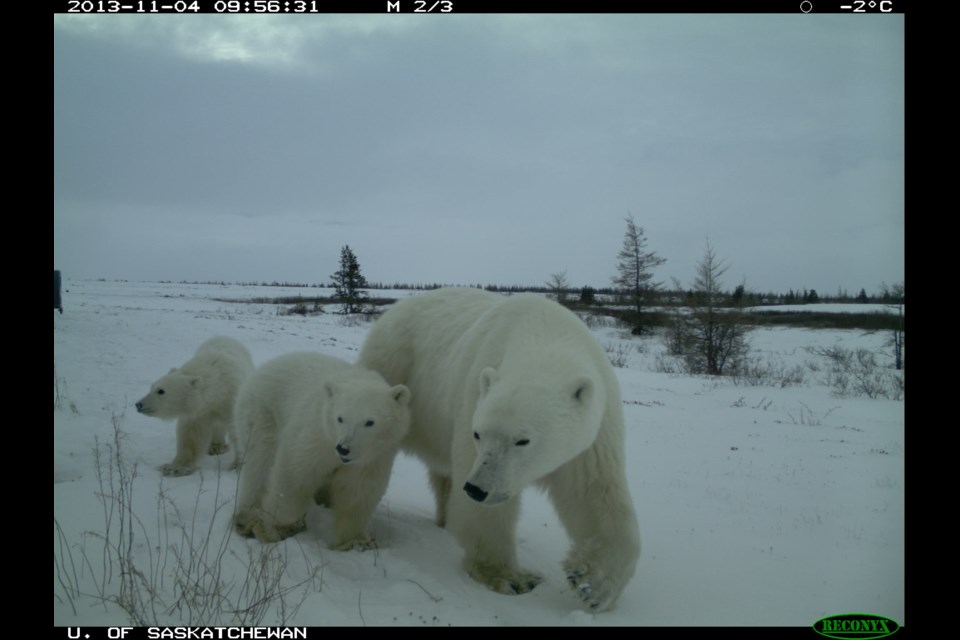A study by University of Saskatchewan (USask) researchers in Wapusk National Park on the shore of Hudson Bay near Churchill has recorded black bears, polar bears and grizzly bears in overlapping areas for the first time.
The study, entitled Novel range overlap of three ursids in the Canadian subarctic, was published in the peer-reviewed journal Arctic Science and lead author Douglas Clark says the presence of all three North American bear species in the same area is consistent with “expected ecological responses to the amplified effects of climate change on high-latitude ecosystems.”
Wapusk National Park is at the northern edge of black bears’ habitat range and the southeastern edge of what seems to be an expansion of grizzly bears’ range in the Canadian Arctic and subarctic. Many polar bears from western Hudson Bay spend the summer and fall in Wapusk because of the complete melting of sea ice, while pregnant females spend the winter inland in a maternity denning area.
“Our observations add to growing evidence that grizzlies are substantially increasing their range in northern Canada,” said Clark, a conservation scientist at the USask School of Environment and Sustainability (SENS), who conducted the research along with Ryan Brook, an associate professor in the College of Agriculture and Bioresources, former SENS and College of Arts and Science students Chelsea Oliphant-Reskanski, Michel Laforge and Kiva Olson, as well as Danielle Rivet, a current student in the College of Arts and Science.
Seeking new or expanded habitats and new food sources are some ways bears may respond to climate change and Wapusk is located at the confluence of boreal forest, tundra and ocean ecosystems, which the researchers say are all changing quickly due to the warming climate.
“What’s clearly new are the grizzlies,” said Clark. “It’s likely that they will benefit the most because they have been known to dominate the other two species elsewhere, for instance eating both black bears and polar bears, or displacing them. This range overlap shouldn’t be viewed as a threat to any of these bears, but should be understood as an ecological response to environmental change.”
Clark said predation by grizzly bears does not have a significant effect on overall populations of other bear species and that smaller bear species change their behaviour to avoid grizzlies. The presence of all three species in the area could affect bear management and conservation efforts, however.
Motion-activated cameras installed in three places in Wapusk recorded 401 bear visits between 2011 and 2017, including 25 by black bears, 10 by grizzlies and 366 by polar bears. The cameras were installed at the request of Parks Canada, which wanted researchers to study the pattern and causes of polar bears visiting the sites.
The polar bear population in western Hudson Bay is considered temporarily stable but they are listed provincially as a threatened species. Grizzlies are a species of special concern in Canada and are on the list of extirpated (locally extinct) animals in Manitoba. Black bears are not categorized as a threatened species.
The study was funded by Parks Canada, USask, the Social Science and Humanities Research Council, NSERC’s Belmont Challenge and the Churchill Northern Studies Centre.




